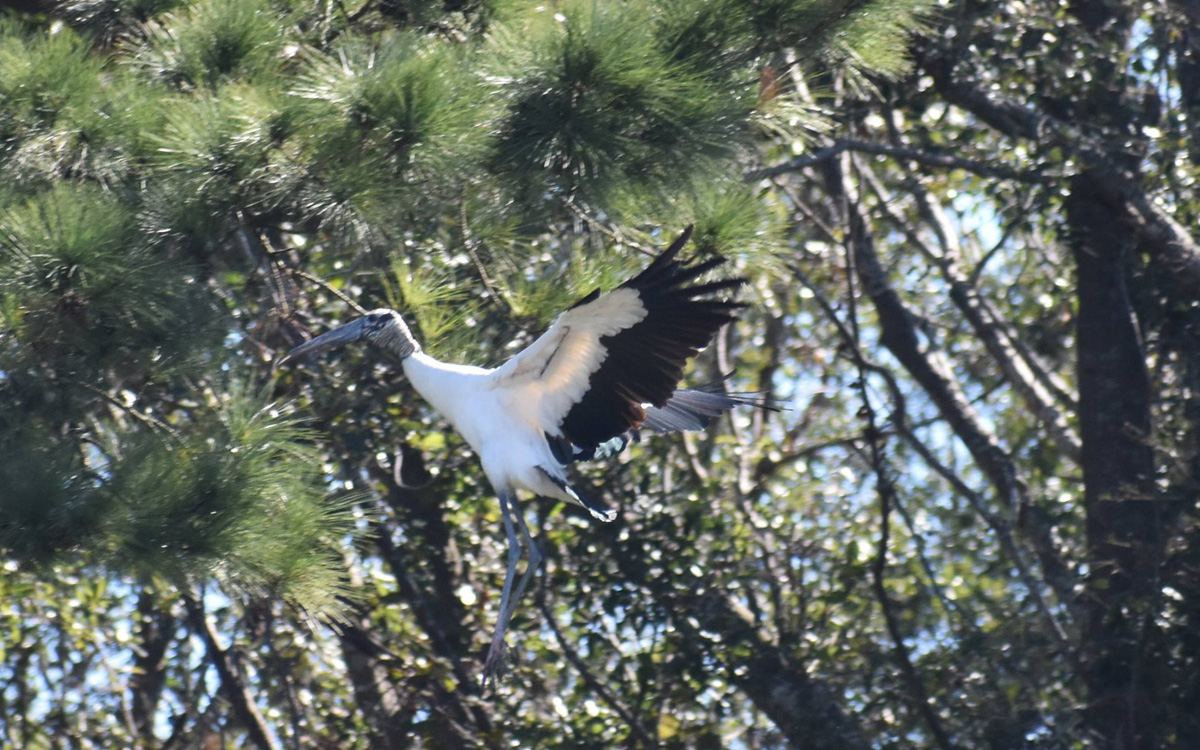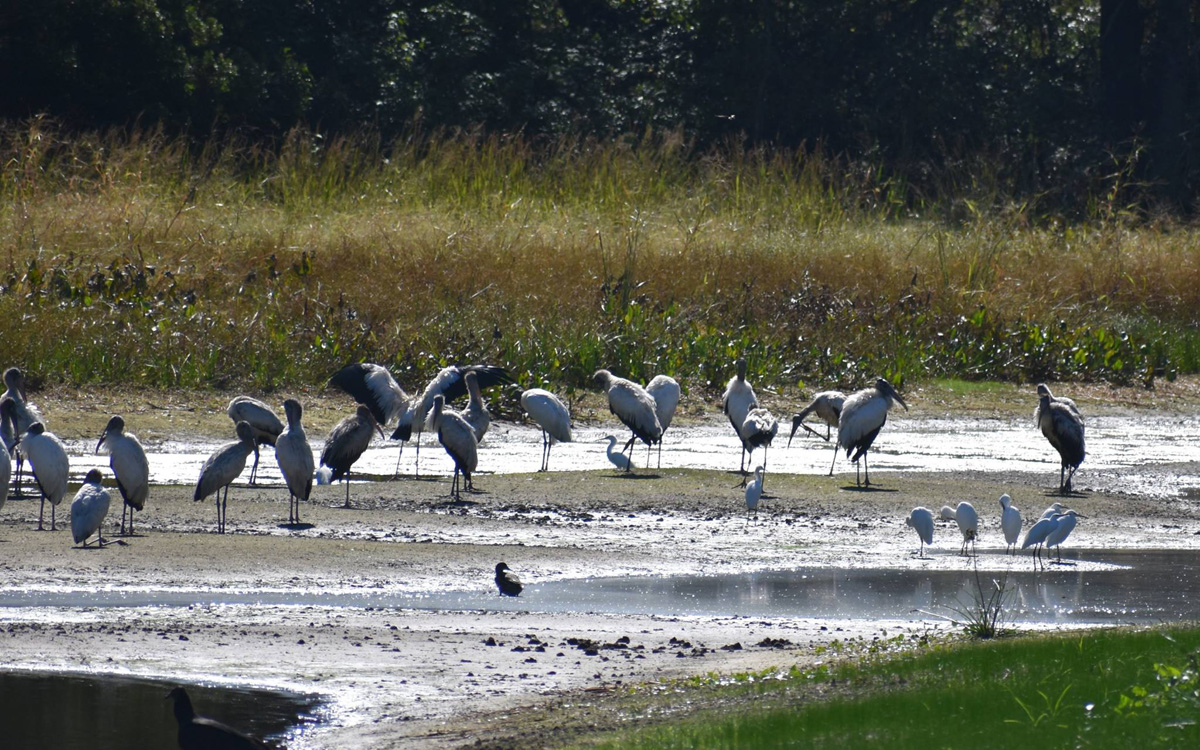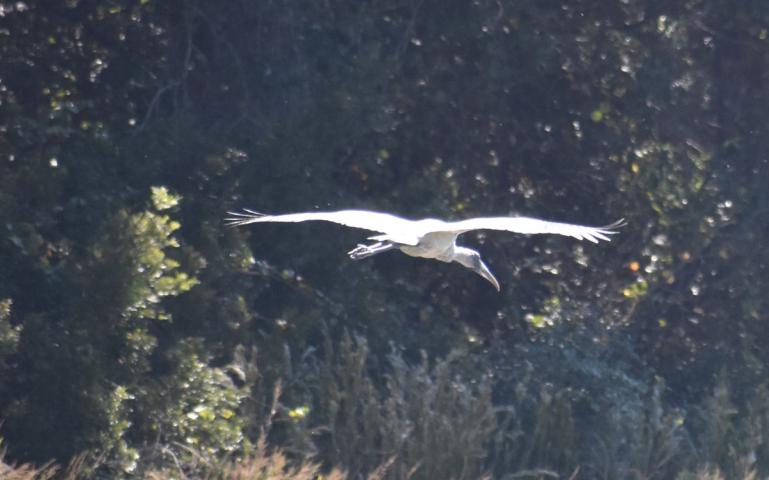
Scientists have predicted a future in which humans will have to abandon coastal cities in order to survive. When that time comes, we might look to America’s native wood stork, a venturesome species that narrowly evaded extinction by uprooting from its native home in the Everglades and seeking more suitable habitats.
In 1984, the big-billed, ungainly, and oddly beguiling black-and-white wood stork was consigned to the Federal Endangered Species List. Its numbers had plummeted from about 150,000 to about 10,000 by the 1980s, and scientists predicted that by the year 2000, the bird would be completely wiped out. Its habitat in the Everglades—where 70 percent of all wood storks dwelled—had been decimated by development and its nests were failing, or as birds died, simply abandoned.

The stork, which stands four feet tall and boasts a regal five-foot wingspan, relies on the unique hydrology of wetlands to wade and forage for the astounding 400 pounds of fish a typical family consumes per nesting season. When the wood stork finds a fish, its bill snaps shut in a mere 25 milliseconds—13 times faster than the blink of a human eye.
This very resourceful stork managed to save itself—with a little help from human hands—by migrating north in search of greener pastures; i.e. better, safer wetlands. “Wood storks are phenomenal in their ability to find food,” explains wildlife biologist Chuck Hayes, of Savannah Coastal Refuges Complex, a network of wildlife sanctuaries spanning from near Hilton Head Island, South Carolina to Wolf Island, near Darien, Georgia.“They routinely fly 50 miles a day to forage. In the mid-‘90s, there was a pond off a reservoir in Georgia where I was working, and for the entire year, we’d never see a single stork. But if we drew the pond down, mimicking a shallow wetlands, the very next day a hundred storks would be wading through, feeding on fish.”

The first emigrants likely landed in Georgia marshes sometime in the ‘80s, because in 1987, former Savannah Coastal Refuges biologist John Robinette noticed scattered stork nests at the 2,762-acre Harris Neck Wildlife Refuge in Georgia’s McIntosh County. Storks like to nest on islands surrounded by water and populated with alligators, which provide protection from predators like raccoons. “It helps to have the mafia surrounding you,” jokes Hayes. He explains that alligators are well fed for their protective services: chicks and eggs often fall from the surrounding nests of storks, herons and other birds.
That first year, 18 nests produced 43 flying wood stork chicks. Led by…





